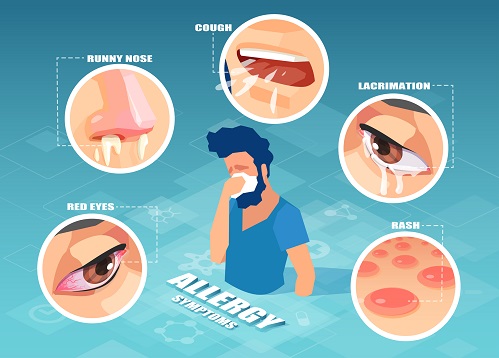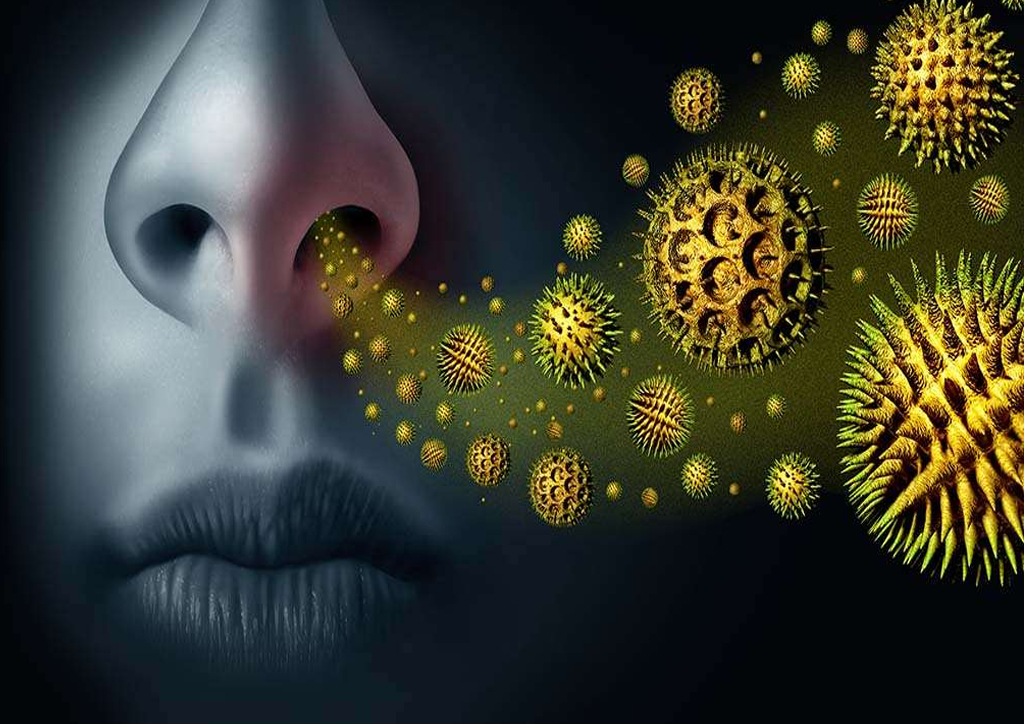
In allergic individuals the body starts producing increasing amounts of an antibody called ‘immunoglobulin E (lge)’ in response to exposure to common harmless environmental substances that it recognizes as ‘allergens’ (antigens). Allergens can be inhaled (pollens, dust, moulds, fungi, animal dander), eaten (egg white, milk, nuts, shrimps, fish, wheat or rice), injected (bee stings or drugs) or they can come into contact with the skin or eyes (dust, pollens, animal dander, moulds).
Allergy can manifest itself in many different forms:

True cure is possible only when we can prevent the body from producing increased amounts of immunoglobulin E to the common environment allergens (e.g. pollens, dust mites), in other words preventing the body from mistaking something harmless for something harmful. However, allergies are terrible and to a large extent the symptoms can be suppressed with currently available medications.
Your doctor is the best person to advice you on ways to make your life as an allergy sufferer more manageable and thus improve your quality of life.
Since the symptoms of nasal allergy are similar to those of common cold, sometimes it may difficult to distinguish between the two. Answering these questions might help you differentiate them.
A fever may be present with a cold but never with allergies alone.
In nasal allergies you may have itchy eyes and nose. In colds you don’t.
Cold symptoms usually last for less than 7-10 days. Symptoms of nasal allergy can last for weeks or months.
If you have nasal symptoms at the same time every year, then actually you have nasal allergy.
In Allergic Rhinitis the inside of your nose gets swollen and inflamed. As a result, you may experience nasal allergy symptoms, such as sneezing, congestion (stuffy nose), runny and itchy nose.
If you sneeze and have a runny nose or nasal congestion only at certain times of the year, you probably have seasonal allergic rhinitis (your triggers are outdoor substance such as: tree, weed or grass pollens, outdoor mold and spores), but if you suffer from nasal allergy symptoms all year long you probably have perennial allergic rhinitis.
If you have nasal allergies, immune cells in your nasal lining overreact to certain “allergic triggers” that you breathe in through air. Substances that cause an allergic response are called Allergens. These include seasonal nasal allergy triggers such as pollen and year round nasal allergy triggers such as dust mites, animal dander and mold spores.

Some of those common allergens that are trigger factors for allergic rhinitis and asthma are:
There are two types of allergy tests. One is a test done with blood samples collected from the patient, and the other skin testing.
Skin prick test: This is the most commonly used allergy test that measures allergen specific lgE attached to most cells in the skin. The skin prick test is quit safe and patient of almost any age group can be tested. However, in some elderly patients the skin may not be capable of reacting and therefore the skin test is of no value.
Positive Reaction: A positive reaction is depicted by a wheat and flare reaction. Basically, the skin becomes itchy within a few minutes and then becomes red and swollen with a ‘wheal’ in the centre and a ‘flare’ surrounding it.
Negative Reaction: A negative response to a skin prick test usually indicates that the patient is not sensitive to that allergen.
Blood test : The blood test measures the amount of allergen-specific lgE antibodies in the blood. The test is carried out using a small sample of blood, which is usually taken from a vein in the arm.
Positive Test : The results of blood tests to measure serum specific lgE are expressed in grades from class 0-6, where increasing classes indicate increasing sensitivity to the causative allergen.
The first step in the treatment strategy for your allergy is to avoid the allergen. The following steps should be taken in order to control your allergies:
Pollens and Outdoor Avoidance
House Dust Mites
Animal Dander
Cockroach Allergen & Indoor Moulds
Antihistamines – These are effective in reducing nasal symptoms of itching, sneezing, and runny nose but are not vary effective for reducing nasal congestion. Older antihistamines can cause side effects that include drowsiness, dizziness, and blurred vision etc. However, most of the newer antihistamines are devoid of these side effects.
Decongestants – Can give quick but short-term relief for nasal congestion. Many decongestants promote histamine release and this can cause a “rebound” effect that ultimately makes nose even more congested tan before. Therefore, topical decongestants should not be used for more than 10 days at a stretch.
Topical Nasal Steroids – It helps to reduce inflammation in the nose. By treating the underlying cause of nasal allergy, nasal steroids provide relief from sneezing, runny nose, stuffy nose and nasal itching. Occasionally, topical steroids can cause a nose bleed, some throat irritation or cough. Often correct administration of the nasal spray not exceeding prescribed doses may prevent these side effects.
Allergen immunotherapy, or allergy vaccines also known as ‘allergy shots’, may be recommended for persons who don’t respond well to treatment with medications, experience side-effects from medications or have long term allergen exposure that is unavoidable. It consist of injections of a diluted allergen extract, administered frequently in increasing doses until a maintenance dose is reached. This helps the body build a kind of tolerance to the causative allergen, reduces the intensity of symptoms caused by allergen exposure, and can also prevent development of new allergies.
Surgery is indicated in select cases of severe nasal blockage which do not improve with medication or immunotherapy.